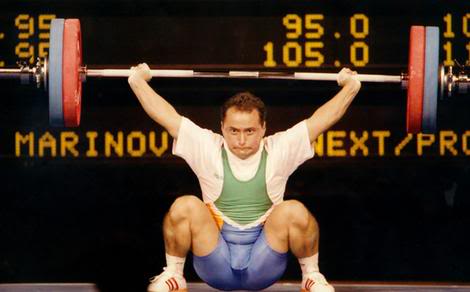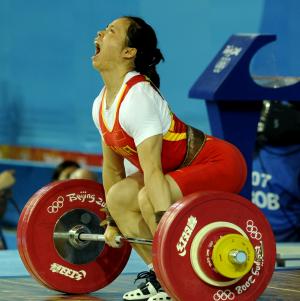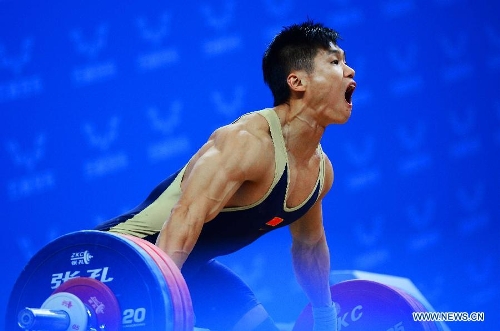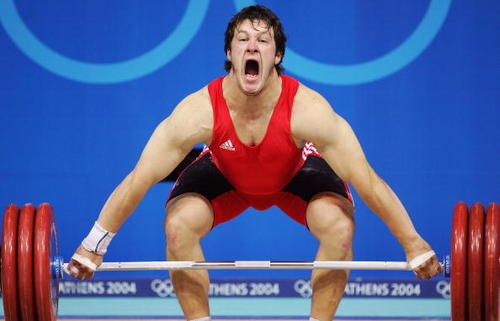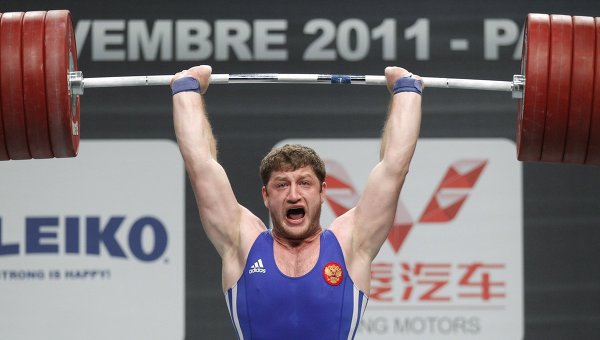The Snatch is an overly technical lift that involves getting the bar from the floor right to overhead in one movement. It should be acknowledged that mastering the Snatch is difficult and takes patience.
However it is not impossible, especially if you put the work in and get proper coaching and cues. First Pull, would like to offer to the readers of The WOD Life Five tips for the Snatch that have help coach athletes to improve your Olympic Lifting and a vital ingredient to the CrossFit Game.
1. Without mobility, optimal technique is not possible
Mobility in weightlifting is often overlooked. Many athletes get to gym and ready up for the lifts in 5 minutes. A few arm swings, a few snatches with the empty bar, and ready they are.
Truth is, this is less than optimal. Weightlifting is a sport of extreme positions. You will be catching bars in full range of motion. It requires optimal mobility of pretty much every joints and muscle in the body. Your warm up strategy should reflect just that: Various types of stretching and activation exercises.
In the snatch, I find that the most overlooked areas are the Thoracic spine, calves and hamstring, although in many cases athletes will have tight hip flexors and quads.
For the thoracic spine, I like the Foam Roller. You will want to contract the abdomen in order to eliminate any compensation of the lower bar. For the calves, I suggest going down in a deep squat and putting a bar on top of your thighs near the knees. Set your back correctly and stay there for a few minutes. For the hamstrings, I like lying on the ground and using a rope to pull one leg (straight) towards my chest.
As for activation exercises, I like having my athletes do snatch grip presses at the bottom of the squat with an empty bar for a few repetitions. Good mornings with the empty bar are great too. Drop snatches can be used to warm you up for the speed element of the lift. Just a few reps with an empty bar as this is just a warm up. I suggest trying many things and figuring out what works well for you.
2. Head position is key
For some reason, many athletes and coaches pay lots of attention to hip height and foot spacing but little attention to the position of the head. If you look at any international caliber lifter, you will see that the lifter is looking above the horizontal line. The neck of the lifter is in great extension.
This is very important as it helps the lifter achieve proper thoracic spine extension. In other words, it sets up your back and allows you to pull smoothly while keeping the shoulders over the bar.
Mel C Stiff wrote about this: ‘’It is vital to use a definite extension of the neck to facilitate powerful contraction of the postural muscles of the trunk during all lifting movements from the ground’’. Just make sure you do not hyper-extend as this can put excessive stress on your neck.
3. Start the pull in a controlled manner (somewhat slower) and then speed up as you pass the knees.
Starting the pull in a controlled way will let you have more control over the bar which lets you set yourself correctly for the second pull (above the knees). The real explosive power has to occur after you pass the knees as your goal is to accelerate the bar in order to pull yourself under it. Starting in a controlled and slower way allows for a proper path of the bar. I find that starting too fast or too briskly create a chaotic bar path.
Since the fight over the inertia of the bar is not done gradually and too violently, the bar ‘’falls’’ back in the hands of the lifter as it accelerates violently and then decelerate. This put the lifter out of position. Since weightlifting is a sport of positions, it is important to keep control over the bar. If you can’t hit the proper positions, you can’t succeed with bigger weights.
4. Relax the arms
When coaching crossfitters in weightlifting, I find that most will put excessive tension in their arms. This is not good as it will greatly change the mechanics of the pull under. The bar will more often than not move away from the body as the arms are too rigid to bend smoothly under the momentum of the bar, which creates an excessive arc. Sometimes using lifting straps can help relax the arms.
Consider this: If you were a baseball pitcher and your goal is to pitch at a speed of 80+mph, would you tense your body excessively as you try to pitch? If you were a sprinter waiting for the signal on the line, would you be tensed up or relaxed? If you ever watch a pitcher or a sprinter, you will see that their body is relaxed. Tension will happen at the key moment, not a single second before.
5. Forget about shrugging the bar up
Many of my clients, who have a background in crossfit, learned the lifts by jumping and shrugging the bar up. I think this is an enormous technical error. Consider this: weightlifting is a sport where you want to give momentum to the bar in order to use this momentum to pull yourself under. This tells us that the transition from the explosion to the descent/pull under has to be rapid. If you jump and then shrug, you will be spending more time than needed at the top of the pull. On top of that, it changes drastically the mechanics of the pull under. It becomes harder as the back and the hip are already extended.
In other words, you want to move around the weight and not have the weight move around you.
Conclusion
There are many other tips and cues that I could have written about. Although they might seem pretty basic, I find these 5 tips to be the best bang for the buck. Simple is often good enough. Weightlifting technique is like sculpting a statue. At first you want to take out big chunk of stone and then, you will want to polish the stone and make it beautiful. These tips will allow you to get rid of the ‘’big chunks’’ that are, in weightlifting, technical errors. Feel free to contact me if you have any questions or want to discuss this further.
Keep training efficiently,
Jean-Patrick
Firstpull.net




